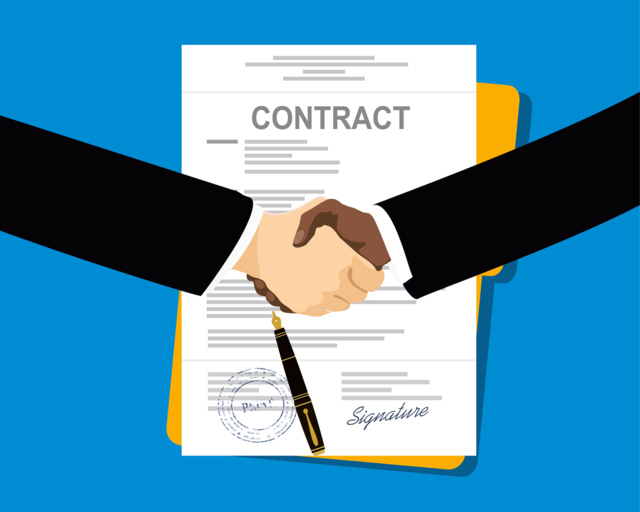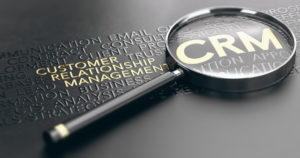Boost your sales success with effective strategies. Learn how to close more deals and increase your revenue as a salesperson.
In the dynamic world of sales, learning how to close more deals is the ultimate endgame. It’s the moment where all your hard work—building relationships, understanding customer needs, and delivering compelling pitches—culminates into a rewarding success. But did you know, according to HubSpot, only 3% of buyers trust sales representatives? This stark statistic underlines the importance of effectively mastering the art of closing deals.
Welcome to our ultimate guide on “How To Close More Deals As A Salesperson.” Packed with proven strategies, practical tips, and industry insights, this guide will equip you with the tools needed to boost your closing rates and transform you into a trusted and successful sales professional. Let’s start turning those maybe’s into definitive yes’s!
What Does It Mean To Close A Deal?
Put simply, closing a deal means you have arrived at an agreement with your customer and have received their commitment to purchase. It’s the point where you’ve successfully navigated all phases of the sales cycle—discovery, research, negotiation, and presentation—and secured a win-win situation for both parties.
Closing deals is essential for any business; it’s the process of turning prospects into paying customers. Without effective closing techniques, your hard work and efforts won’t translate into sales and revenue for your company. Now let’s jump into how to close more deals.
Knowing Your Prospects
Winning more business is crucial for any company. It’s important to know who your potential customers are and what they need. This helps you make more sales. When you understand your prospects, you’re aware of their problems and how your product or service can fix them. You also get to know their budget and timeframe, allowing you to tailor your offer to match their needs and expectations. By doing this, you increase your chances of making a sale. Plus, when you understand your prospects’ needs and motivations, you can give them a personalized experience that builds trust and connection. Simply put, understanding your prospects is a key step in winning more business.
Example 1: A local bakery saw an increase in sales after they realized their prospects were health-conscious consumers. They started offering gluten-free and vegan options, meeting the needs of their target audience.
Example 2: A software company discovered that their prospects were small businesses looking for affordable solutions. They created a cost-effective package specifically designed for these businesses, resulting in a significant boost in sales.
Example 3: A car dealership identified that their prospects were families needing safe and reliable vehicles. They started showcasing family-friendly cars with high safety ratings, which led to an increase in sales.

Developing a Closing Strategy
Finalizing sales is a key part of any selling process. To make sure you’re securing more deals, it’s essential to have a strategy in place. This strategy should consider your customer’s needs. A good strategy includes understanding what the customer wants, planning how to meet these wants, and having a communication plan that prioritizes the customer.
By taking the time to comprehend what the customer needs and devising a plan to fulfill those needs, you can secure more deals. Also, by promoting clear and honest communication, you foster trust with your customer, which increases the likelihood of successfully sealing the deal.
With a robust strategy for closing, you can finalize more deals and cultivate long-term relationships with your customers.
Example 1: A real estate agency implemented a strategy focused on understanding the specific needs of their clients, such as location and budget preferences. This allowed them to close deals faster by offering properties that perfectly matched their clients’ requirements.
Example 2: An IT solutions provider identified their clients’ needs for timely and efficient service. They developed a communication plan that kept their clients informed about the progress of their projects, which led to a higher rate of deal closures.
Example 3: A fitness center learned that their prospects valued flexible membership plans. They tailored their offers accordingly, which resulted in more memberships closed.
Overcoming Sales Objections and Addressing Concerns
Sales objections are a common part of the sales process. They’re essentially the reasons potential customers give for not wanting to buy a product or service. Understanding these objections and knowing how to address them can greatly improve your sales success rate. Here are some common sales objections and ways to address them:
Price Objection
This is perhaps the most common objection in sales. Prospects might say, “It’s too expensive,” or “I can find a cheaper alternative.”
Response: Instead of reducing your price immediately, try to demonstrate the value your product or service provides. You could say, “I understand that cost is a crucial factor for you. However, our product ensures high-quality performance and longevity, which can save you money in the long run.”
Need Objection
Some prospects may feel they don’t need your product or service right now. They might say, “I don’t need this at the moment.”
Response: In this case, it’s essential to educate the prospect on the benefits of your product or service. You could say, “I understand that you might not see the immediate need. However, our product/service can provide these benefits [mention benefits] which can help you in the future.”
Authority Objection
Sometimes, the person you’re talking to might not be the decision-maker. They might say, “I need to discuss this with my team/boss.”
Response: Respect their position and offer to provide more information or a demonstration for the decision-makers. You could say, “I completely understand. How about I arrange a presentation for your team so they can also understand the benefits?”
Trust Objection
Trust is crucial in sales. If a prospect doesn’t trust your company or product, they might say, “I’ve never heard of your company before.”
Response: Provide testimonials or case studies from happy customers. You could say, “I understand your concern. Let me share some testimonials from our satisfied customers.”
Competition Objection
If prospects are considering your competitors, they might say, “Why should I choose you over [competitor’s name]?”
Response: Highlight what sets you apart from competitors without badmouthing them. You could say, “While [competitor’s name] is a great company, we offer [mention unique selling points].”
By effectively addressing these common sales objections, you can navigate the sales conversation in a way that reassures your prospects and increases the likelihood of closing the deal. Remember, objections are not rejections; they are opportunities for you to provide more value and information to your prospects.

Use A CRM System
A Customer Relationship Management (CRM) system is a great tool for streamlining sales processes and increasing efficiency. A CRM can be used to store customer data, track leads, analyze performance, and manage campaigns. It makes it easier to keep track of the entire sales pipeline and identify areas requiring improvement.
For example, you can use a CRM system to identify potential customers, plan campaigns, and manage contacts. It can also be used to evaluate the performance of sales reps and create reports on customer engagement.
Overall, using a CRM system can help you close more deals by providing you with complete visibility into your sales process. This allows you to make data-driven decisions that lead to better results. Additionally, it can help you foster relationships with your customers, leading to more sales and long-term loyalty.

Find The Decision Maker
Identifying the decision-maker within an organization is essential for closing deals. The decision maker is the person who has the authority to make purchase decisions and sign contracts.
When researching potential customers, it’s important to determine who this person is so you can target them with your sales pitch. Reaching out directly to them increases the likelihood of securing a deal since they are the ones who will ultimately make the decision.
You can use LinkedIn or other social media sites to identify key decision-makers within organizations and build relationships with them. Additionally, you can research potential customers by attending industry events and networking with people in your field. This allows you to meet the right decision-maker and pitch directly to them.
Understand Their Budget
Another key factor for closing a sale is understanding the prospect’s budget. Every customer has different financial constraints, and it’s essential to be aware of them to increase your chances of success.
If you don’t know what the customer can afford, you might end up wasting time pursuing deals that are over their budget. Therefore, it’s important to find out what kind of budget the customer has before making your pitch.
You can ask them directly or do some research to get an idea of their financial capabilities. Additionally, you can also offer payment plans and other financing options to make it easier for customers with limited budgets. This increases the chance that they will accept your offer and close the deal.
Listen And Offer Solutions
In sales, listening is an essential skill. You need to be attentive to what prospects tell you and provide solutions that meet their needs.
The more you listen, the better understanding you’ll have about what they need and want. This can help you come up with creative solutions and adjust your pitch as needed. Additionally, it shows them that you value their input and that you care about their needs.
When listening to prospects, make sure to take notes so you can remember the key points they mention. This will also help you build trust with the customer and show them that you are paying attention to what they say.
Be Persistent Yet Respectful
Finally, it’s essential to be persistent yet respectful when trying to close more deals. Don’t give up too easily, but don’t be pushy either.
Follow up with prospects regularly until they make a decision. You can do this by sending emails, making phone calls, or even meeting them in person to discuss their needs further. However, make sure you’re respectful and professional when doing so. It’s also important to respect their decisions and understand that some prospects might not be ready to buy yet.
Conclusion
Learning how to close more deals is an essential part of any successful sales strategy. By understanding your prospects, developing a closing strategy, and using effective closing techniques, you can increase your deal closure rate and maximize your sales potential. Make sure to utilize the tips and techniques outlined in this article so that you can become a master closer and maximize your sales success.
If you’re trying to find a new job or hire new sales candidates for your team, let Sales Recruiters Chicago help you. Our team of sales headhunters specializes in finding and placing top sales talent. If you want to learn more about how we can help you, just give us a call today.



Comments are closed.